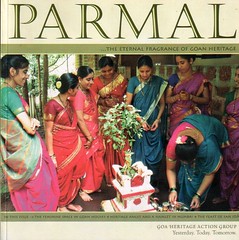
Tom and Jerry (MGM) - Wikipedia, the free encyclopedia
Riza (8) was narrating this little funny to us all, about her brother Aren (3).
I suspect she's feeling shy to write about it in her blog ... and she does think twice about the impact of any potentially-embarassing information "leaked out". She does let things slip sometimes, though :-)
The kids have been watching a lot of TV these days... which is obviously, not a good thing.
Tom and Jerry (MGM), has turned into one of Aren's favourite. Who doesn't know of the series of theatrical animated cartoons produced by Metro-Goldwyn-Mayer, featuring a cat and a mouse? Not if you're thoroughly cartoonolised, like us here. Indian animation is slowly just building up, and Goan animation...? Forget about it!
Riza claims Aren got to asking her, "Riza, can you get a Jerry for me?" (He talks in a sing-song way, and can be realllly polite and charming, if he wants to.)
With a broad grin, Riza narrates that she simply told him: "Aren, we already have so many Jerries (rats) in our house!"
Yeah, fighting the rat population in this part of the globe can indeed be quite a challenge. We even discussed this issue even on Goanet in the past. Expats think it's a joke, I guess.
One can still laugh when one sees some of the answers here and here. To be fair, Goanetter Gabe Menezes was kind enough to get a tiny device that is meant to create an electronic noise and chase away these not-so-charming Jerries. Rahul Alvares, a nature enthusiast from the neighbouring village of Parra, who has 'pet' snakes to feed, was helping us with sourcing the right 'traps', so that he would get occasional food for the creepy-crawlies at his home. This works upto a point; the rats start gnawing at the cages (successfully) and you also need patience to keep on at it! Okay, can't blame anyone here....
Wikipedia says: Rat is the term generally and indiscriminately applied to numerous members of several rodentfamilies having bodies longer than about 12 cm, or 5 inches (Smallerthin-tailed rodents are just as often indiscriminately referred to as mice).[1] In scientific usage, a rat is any one of about 56 different species of small, omnivorous rodents belonging to the genus Rattus.
Some more Wikipedia facts:
By most standards, rats are considered pests or vermin.They can be very destructive to crops and property. Rats can quicklyoverpopulate when they live in a place where they have no predators,such as in certain cities, and their numbers can become hard tocontain. Because of this, the entire province of Alberta, Canada has upheld and maintained a rat-free status since the early 1950s; it is even illegal to keep pet rats there.
Rats have a significant impact on food production. Estimates vary,but it is likely that anything between one-fifth and one-third of theworld's total food output is eaten, spoiled or destroyed by rats andother rodents.
Rats can carry over thirty different diseases dangerous to humans, including Weil's disease, typhus, salmonella and bubonic plague. Black rats are suspected to have had a role in the Black Death, an epidemic which killed at least 75 million people in Europe, the Middle East, and Asia in the mid-late 14th century.
A variety of rat control methods have been used throughout humanhistory to either reduce or eliminate rat populations in homes,markets, farms, and industrial sites. The two most widely used methodsare rat poison and rat traps, though cats and dogs have also been employed to hunt rats. Professional rat-catchers can be found in many developing countries.
Because rats are nocturnal, daytime sightings of rat activity canmean that their nesting areas have been disturbed or, more likely, that there is overpopulation of them in the local area. It is typically at this point that vermin control measures tend to increase.
Rats often chew electrical cables. Around 26% of all electrical cable breaks are caused by rats, and around 18% of all phone cable breaks. Around 25% of all fires of unknown origin are estimated to becaused by rats.
Rats, particularly roof rats (Rattus rattus), can enter theattics of homes where they mate and nest. This problem occurs commonly in coastal, temperate climates and affects even the cleanest, well-kept homes.
Oh, it seems like they've got a very bad press!
But, for now, the challenge is to get Riza to narrate this story ... in her own words, on her own blog. Maybe I should try more determinedly when she's back from school tomorrow. Christmas has been one big blur of parties for the kids (okay, they're only kids once!) what with their grandmum and uncle down from Mumbai.
technorati tags:goa, rats, rodents, india, riza, aren, rizagoa, rizagoa.blogspot.com
Blogged with Flock




 "
"
